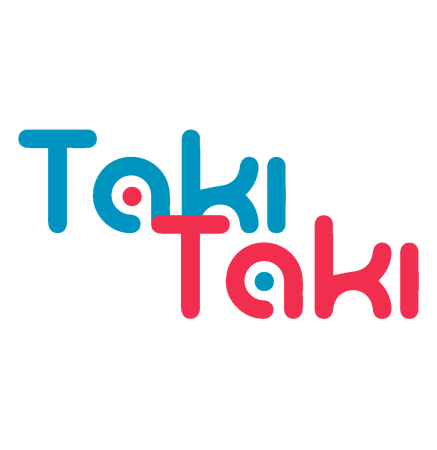- No Products In The Cart
- start shopping
What is Bad Quality Hash? How To Check for Quality!

What is Bad Quality Hash? How To Check for Quality!
Hash has a long and storied history; this concentrated form of cannabis has been consumed and enjoyed around the world for centuries, with evidence of its use dating back to ancient cultures in Central Asia, the Middle East, and India.
Today, hash remains a popular choice among cannabis enthusiasts, prized for its potent effects, unique flavour profiles, and versatility in consumption methods. Whether you’re a seasoned cannabis consumer or a newcomer to the world of hash, there is something for everyone.
However, not all hash is created equal, and the quality of hash can vary widely depending on several factors. Bad quality hash can be a disappointing and even dangerous experience, so it’s helpful to know how to spot bad hash.
In this article, we’ll take a look at the signs of bad-quality hash and how you can test your hash with the ‘bubble test.’ Don’t worry. We will also look at the characteristics of good quality hash as well as explore some commonly asked questions about hashish!
What is Hash?
Hashish (Hash) is a concentrated form of cannabis that is produced by extracting the trichomes from the cannabis plant.
Also known as Resin glands, the trichomes are small, hair-like structures that grow on the surface of the cannabis plant and are packed with high levels of cannabinoids and terpenes. The resin is extracted using various methods, including hand-rubbing the plant material, sieving it through screens, or using solvents like ice water or butane.
Once the resin has been collected, it is pressed into a solid form and depending on the production method used, texturally hash can range from light and crumbly to dark and sticky. Smoking hash tends to be the most popular method of consumption; whether enjoyed through a vaporizer or sprinkled into a joint, hash is often referred to as the ‘icing on the cake.’
What Does Quality Hash Smell like?
Depending on the strain and quality of the product, a hash can have a variety of smells. High-quality hashish typically has a potent and distinctive aroma that has been described as earthy, spicy and even herbal. Higher-quality hash has been known to emit citrus, pine, or flowery overtones!
How to Spot Bad Hash
When it comes to spotting bad hash, there are a few key indicators to look out for. Firstly, the eye test. Appearance can be a telltale sign of bad hash. If your hash has discoloration, spots throughout, or looks mouldy or damp, it’s probably a good idea not to smoke it.
Another quality indicator of hash is the smell. If your hash has a sour or musty smell, this usually indicates the presence of mould or mildew. Along with the smell, the texture of your hash is also important to consider. Bad hash tends to be extremely dry and crumbly. If you find your hash to be overly sticky and gooey, that too can be a sign of spoiled hash.
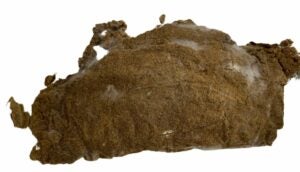
Testing Your Hash
A useful method to evaluate the quality of hashish is the “bubble test.” To perform this test, take a small piece of hash and heat it with a flame. If the hash is of good quality, the resin will begin to bubble. Premium Quality hash normally ignites quickly and burns with a clean flame. If the hash doesn’t bubble, it might be of poor quality, contain impurities, or have an excess of residual plant matter.
What Makes a Good Hash Strain?
Ultimately, what makes a good hash strain will depend on the desired effects of the individual. Some people prefer a ‘loud’ strain with a strong and pungent aroma, while others may prefer a milder and more subtle flavour profile. The only true prerequisite is to choose a reputable producer to ensure the quality and purity of the hash. That being said, there are some quality indicators you can look for.
Firstly, nearly all high-quality hash usually originates from a flower with high trichome density. Trichome-rich plants have historically yielded high-potency hash. Also, a diverse and nuanced terpene profile produces a good hash strain. Terpenes are the elements that give different cannabis strains their unique fragrances and flavours as they reflect the strain’s genetic heritage.
The resin content can also impact the quality of the hash, with higher resin content leading to a more flavorful and potent hash, and lower resin content resulting in a milder flavour and aroma. You can’t talk about the quality of hash without mentioning the potency. Strains with higher concentrations of THC directly correlate with the more potent strains of hash.
What Types of Hash are there?
Each type of hash has its own unique properties and production methods, resulting in a wide range of textures, flavours, and effects. Let’s take a brief look at some of the more popular types of hash.
Traditional Hash
Traditional hash, commonly referred to as hand-rubbed hash, is created by hand-harvesting cannabis plant resin or using a silk screen. This technique yields a rich, earthy taste and a crumbly, sticky texture.
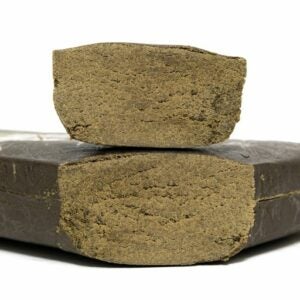
Dry Sift Hash
To make dry sift hash, cannabis plant material is sifted through several screens to catch the trichomes. This process results in a flavorful, (often spicy) light, fluffy texture.
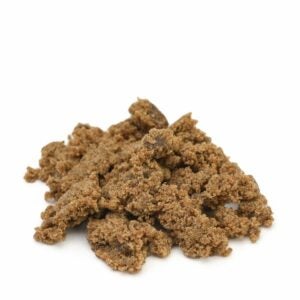
Charas
Charas is a type of traditional hash that is made by rubbing fresh cannabis flowers between the hands to collect the resin. This method is most popular in regions such as India and Nepal and produces a dark, sticky substance with a distinctive aroma and flavour.
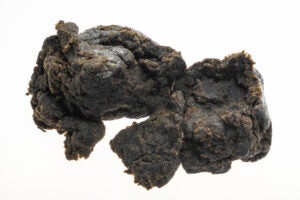
Bubble Hash
Cannabis plants are stirred in ice water to separate the resin from the plant material to create bubble hash, (also known as ice water hash). After filtering the resulting combination through many screens to get rid of any remaining plant matter, a fine, powdery residue remains.
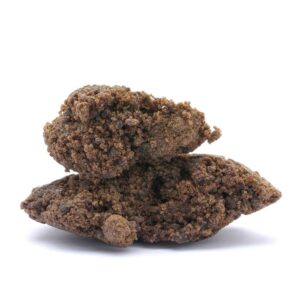
Rosin
Hash formed from cannabis flower or kief under pressure, and heat is known as rosin. This procedure causes the plant material’s resinous trichomes to release, producing a sticky, sap-like substance that is rich in cannabinoids.
Click here to view our full hash collection today!

Final Thoughts
Whether you’re using the bubble test or relying on visual cues such as discoloration, there are many indicators of low-quality hash that can be easily spotted. By considering these factors and choosing a reputable producer, you can enjoy the benefits of high-quality hash without the risk of any negative effects.
Be sure to take a look at our premium-quality hash on our website. Our collection of domestic pressed and hand-picked international pressed hash has been quality assured for your convince and pleasure. Enjoy Responsibly!
FAQ’S
What is the purest form of hash?
Full melt hash, commonly referred to as “melts” or “ice wax,” is typically thought to be the purest type of hash. Using a solvent-free extraction technique, full melt hash is created by separating the trichomes from the cannabis plant’s other components with ice water and several screens. Hash produced with this method is highly strong and pure, with high levels of terpenes and cannabinoids.
Which country has the best hash?
For decades, hashish has been produced and enjoyed throughout the world, and various countries are renowned for manufacturing their distinctive varieties of hash. It’s difficult to say which nation makes the “best” hash, as quality can vary greatly based on a variety of factors. Having said that, countries such as Morocco, Afghanistan, India and Nepal are renowned for creating the high-quality hash.
Check out our premium imported hash, including Morocco, Pakistan and Afghanistan!
Can you smoke food-grade hash?
No, it is not recommended to smoke food-grade hash, as it is not intended for smoking or inhaling. Hash designed for use in edibles or other food products is often prepared with food-grade solvents, such as ethanol or coconut oil.
